In February 1946, a group of people (representing more than two dozen community organizations) came together under the chairmanship of Louis G. Howard to form the Selkirk and District Memorial Committee. Their objective was to decide on a suitable memorial to the servicemen and women of the region who died in the Boer War, First World War, and Second World War. They reached the conclusion that a ‘living memorial’ in the form of a new community hall would be best.
The Memorial Committee’s first fundraising meeting took place at the community hall on Eveline Street in October 1946. The guest speaker was Charles Barbour who, just months earlier, came from Montreal to be Winnipeg’s first Recreation Director. He reassured the committee that they had made the right choice, saying;
“Memorials of the granite statue type which flourished after the last war are outmoded. Living memorials, such as recreation and sports centres, will fill a very real need in the life of the community.”.
Fundraising and Campaigns
As the meeting drew to a close, representatives from several organizations (including the Selkirk Rotary Club, Selkirk Kinsmen Club, the Royal Canadian Legion Ladies’ Auxiliary, Army-Navy Airforce Veterans ladies’ auxiliary, the Lord Selkirk chapter of the I.O.D.E. and Laural Rebekah Lodge) contributed a total of $6,500 towards their goal of $50,000.
Fundraising took place over a few years with a series of charity auctions, dances, and door-to-door canvasses. The Memorial Committee had to put its efforts on hold while the campaign to furnish the town’s new arena took place in 1949, and during the relief appeal following the 1950 Red River Flood.
By the autumn of 1950, the committee raised around $27,000 and renewed their campaign. They hoped that the rest of the money could be raised within the next year. The desire to begin construction as soon as possible may have had something to do with the fact that the old community hall — which was built in 1892 as a federal fish hatchery and converted in the late 19-teens — was deteriorating rapidly.
The prolonged fundraising period for the Memorial Hall saw it run into another competing campaign, this time for a new hospital, which reduced donations considerably. With each passing year, the estimated cost of construction grew and stood at $80,000 at the end of 1951.
Location Change
To ensure that the project got off the ground, the town council agreed in February 1951 to change the location of the proposed hall. Instead of the stand-alone site it owned on Main Street, the new Memorial Hall would adjoin to the Selkirk Arena on Jemima Street. This would provide the town with a more versatile community hub and save a great deal of expense as the hall could share the canteen, washrooms, and parking lot with the Selkirk Arena.
The move required Winnipeg architect Edward Prain to rework his plans for the building. Prain, who was born and trained in Scotland, designed many of Selkirk’s notable public buildings including its town hall (1939), Daerwood School (1950) and Selkirk Collegiate (1956).
The new building would measure 33.25 metres by 15.25 metres (109 feet x 50 feet), with a hall area that could hold 500 people. It also included a stage with dressing rooms on either side and a 3-metre by 3-metre memorial chapel.
Opening Ceremonies
The sod-turning ceremony for Memorial Hall took place on September 21, 1951, with W. E. Gordon (secretary-treasurer of the memorial committee) given the honour of breaking the first ground. Construction went smoothly, with many contractors providing materials at a discount. Some of the wood from the old community hall — which had been demolished the previous spring — was reused to keep costs down.

Memorial Hall hosted its first event, a New Year’s Dance put on by the organizing committee, on December 31, 1951. However, there were still a number of finishing touches to add to the building.
On the evening of January 17, 1952, Memorial Hall was officially opened and dedicated to the men and women who gave their lives in the Boer War, First World War and Second World War.
The chapel was dedicated the same night, after wreaths had been laid by the city and veterans’ organizations. Rev. R. N. R. Holmes, an active navy chaplain during the Second World War, performed the blessing. Items in the small chapel include a Book of Remembrance containing the names of those who died, a stained-glass window, and the bell from the HMCS Daerwood. More recently, it became home to the 108 Battalion War Memorial bronze tablet.
Memorial Hall was so popular that in October 1952, community organizations were notified that they had to book space at least six weeks in advance for their events. Otherwise, space would not be available.
Since the city would be running Memorial Hall, Louis G. Howard presented the keys for Memorial Hall to Mayor Steve Oliver on January 28, 1952. Howard’s committee work did not end there, as it still had a $10,000 debt that needed to be retired. A new fundraising campaign began in February 1952, which took more than a year to complete.
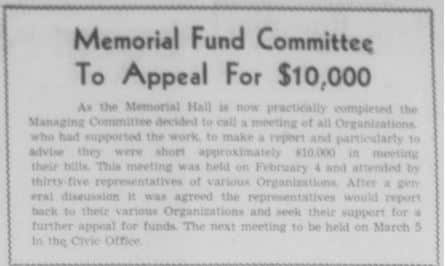
Memorial Hall Collection


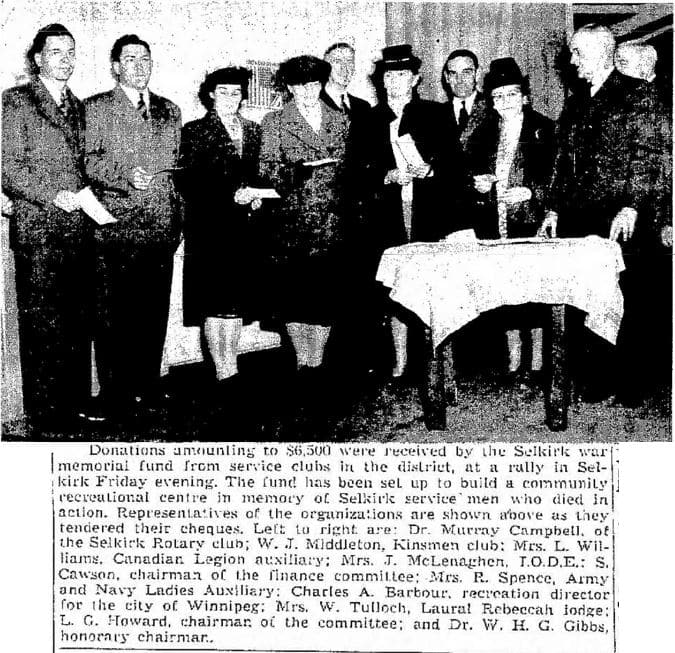
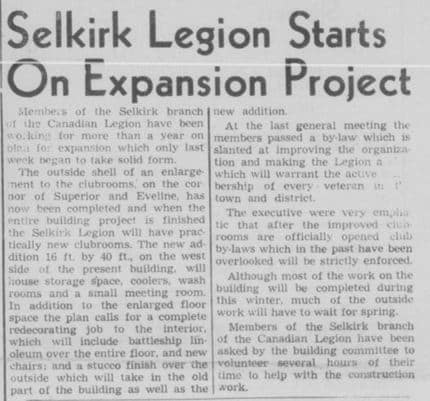
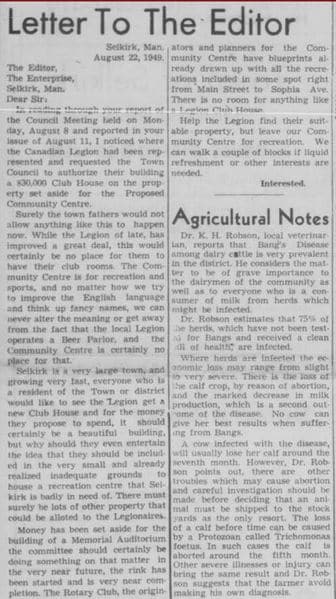

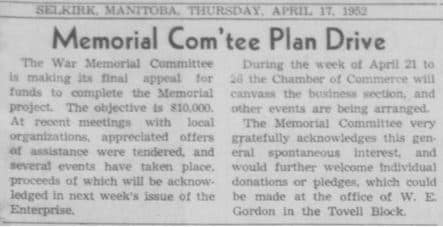



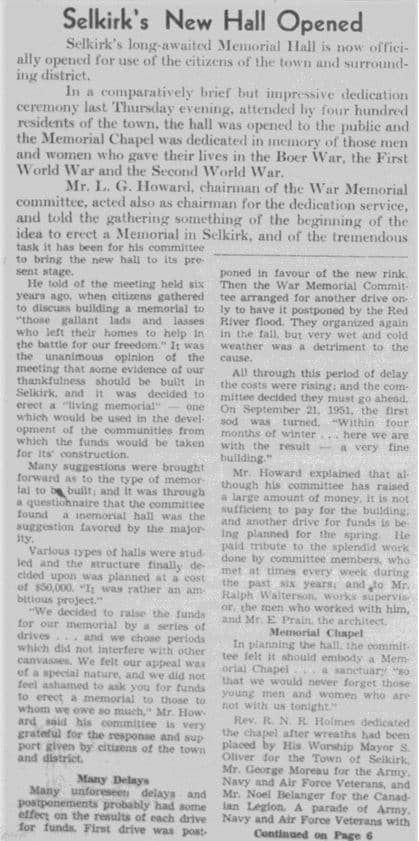
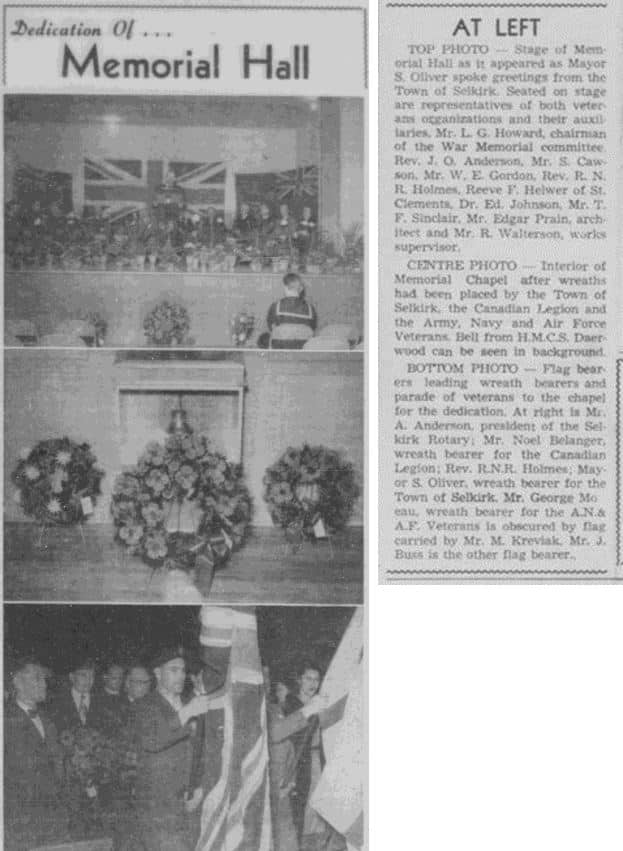

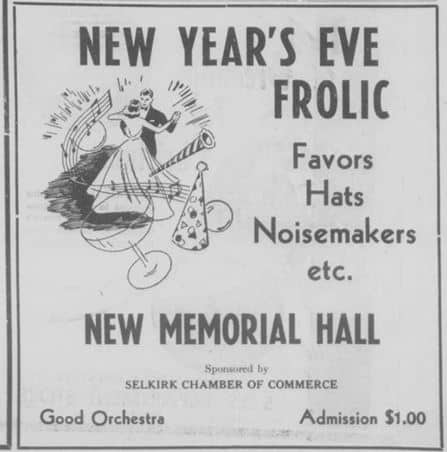
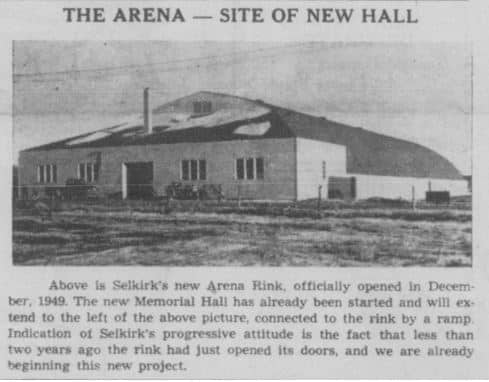
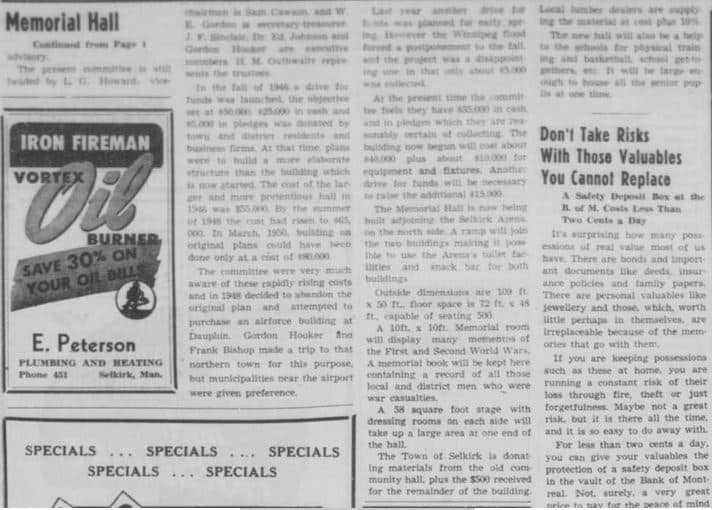
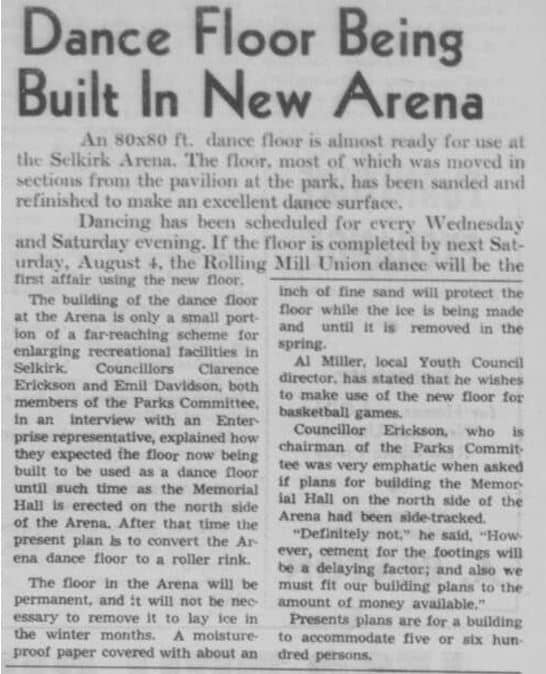
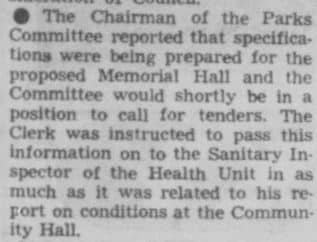

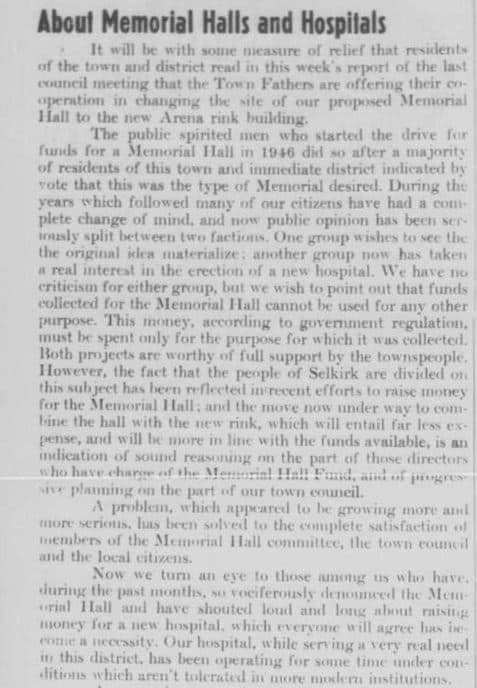
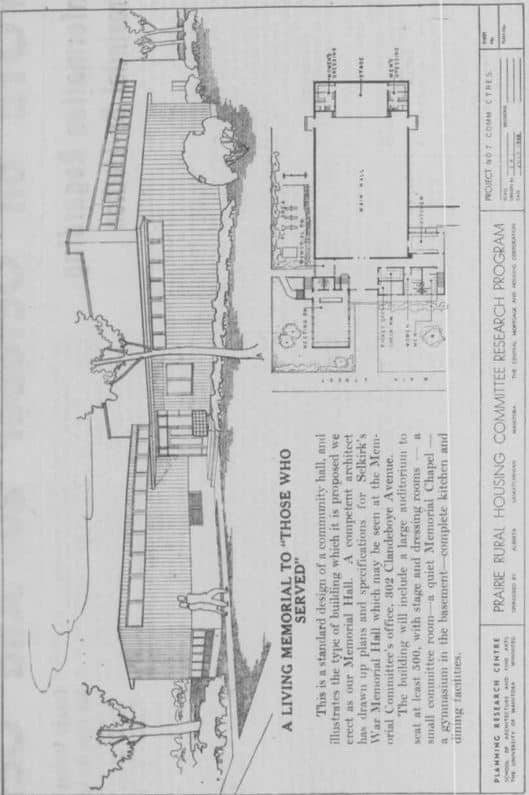
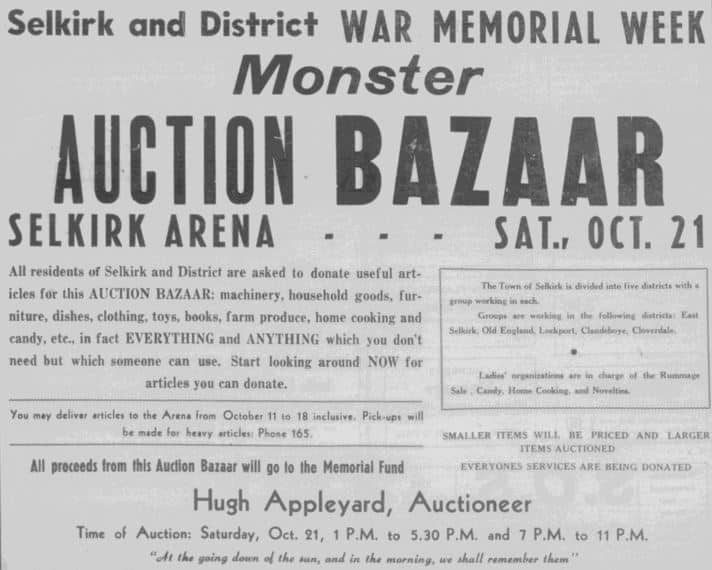
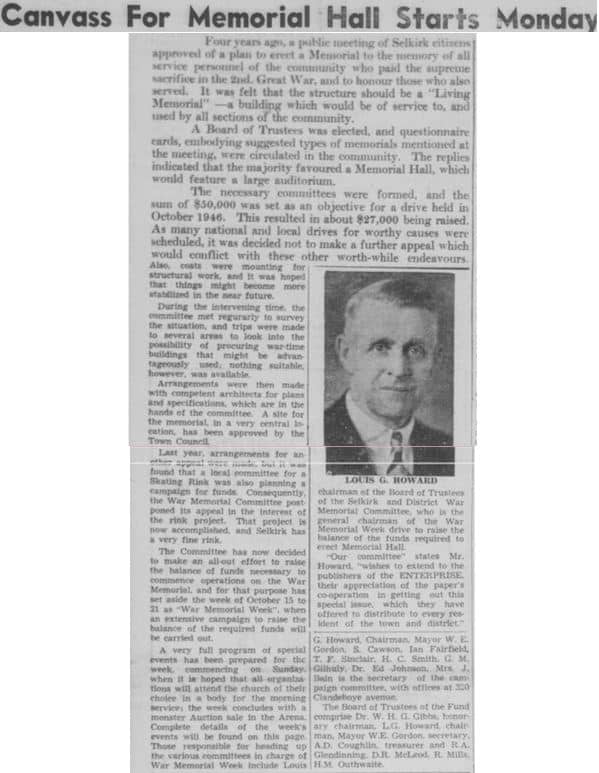
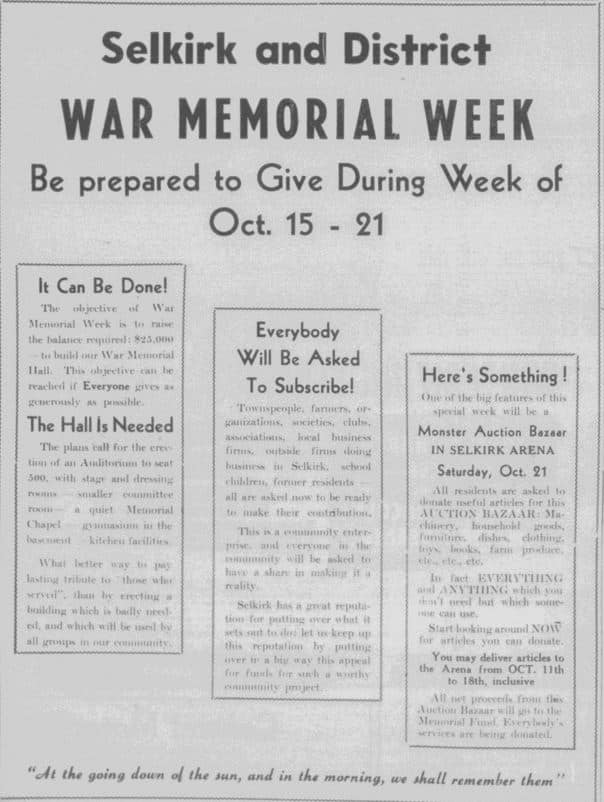
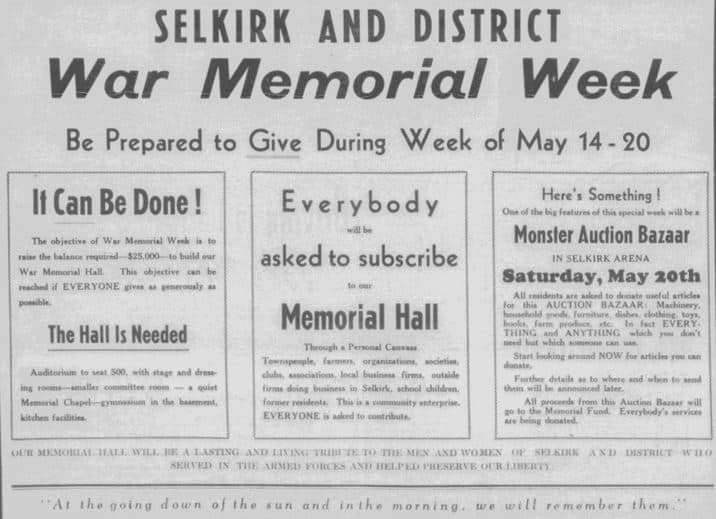
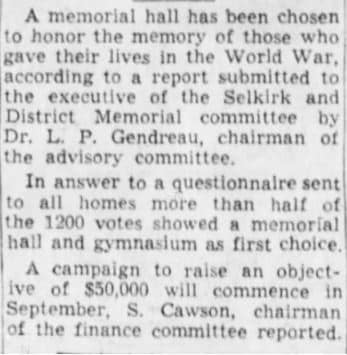
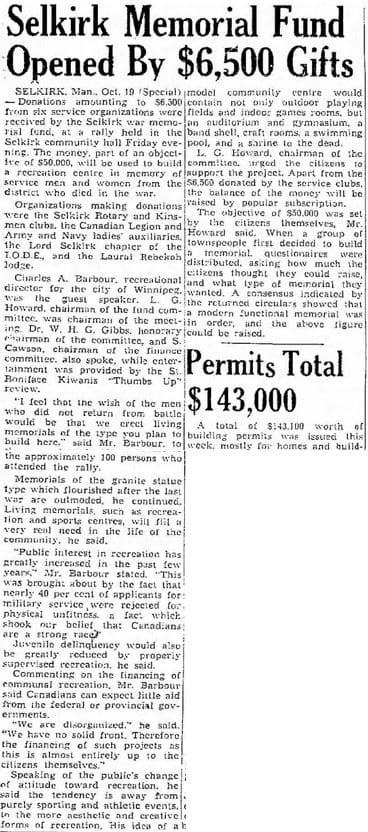

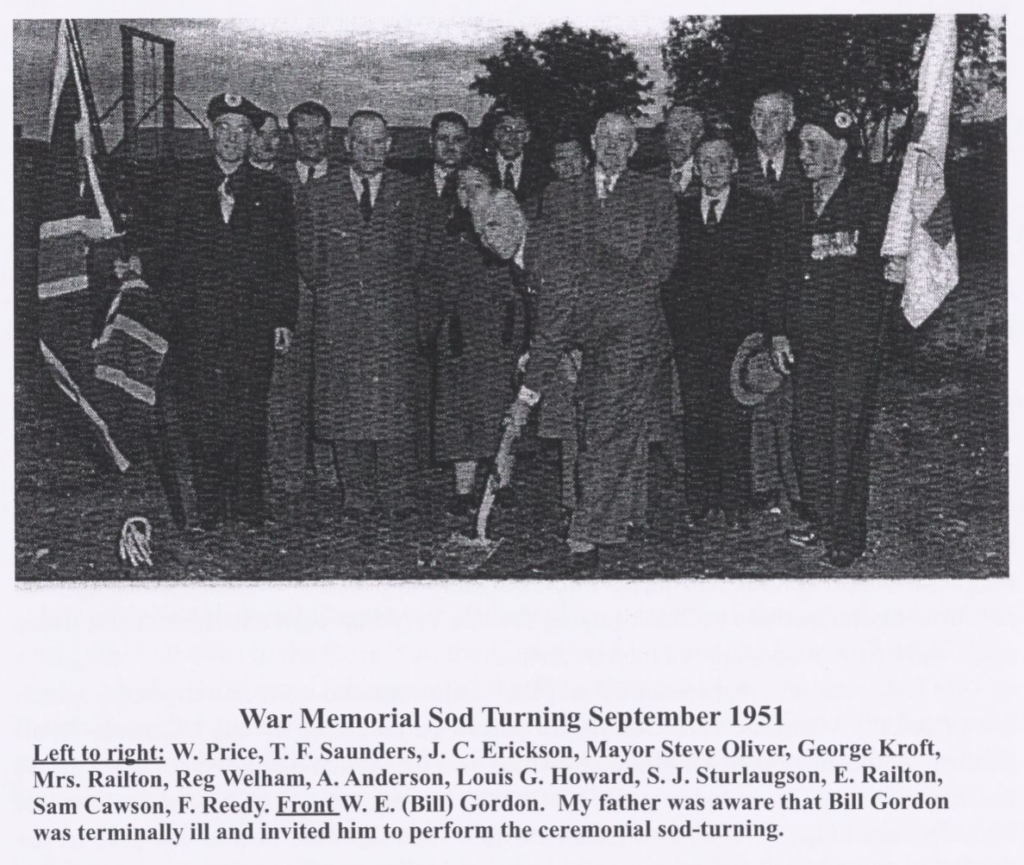
Sources
Selkirk Enterprise 1949, 1950, 1951, 1952
Stories of Selkirk’s Pioneers and Their Heritage, Kenneth G. Howard
Winnipeg Free Press 1946
Winnipeg Tribune 1946

